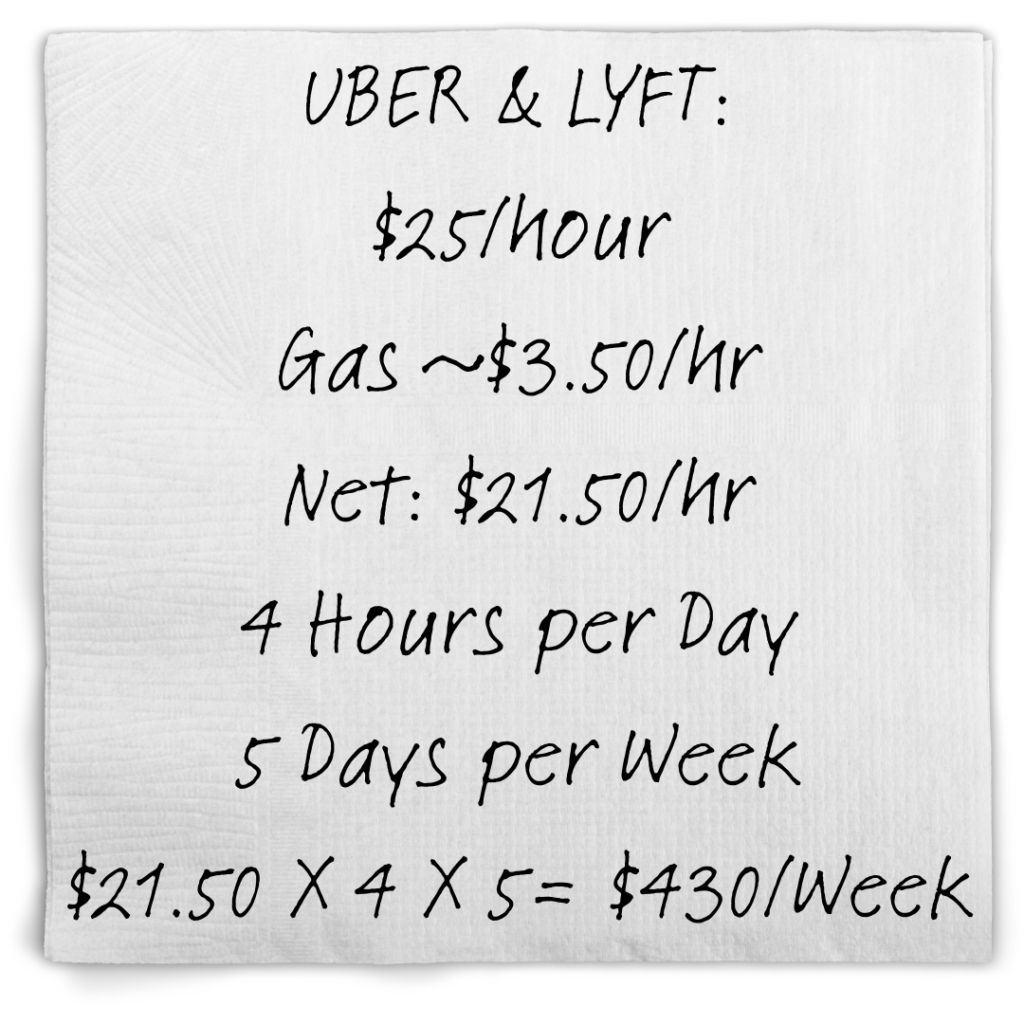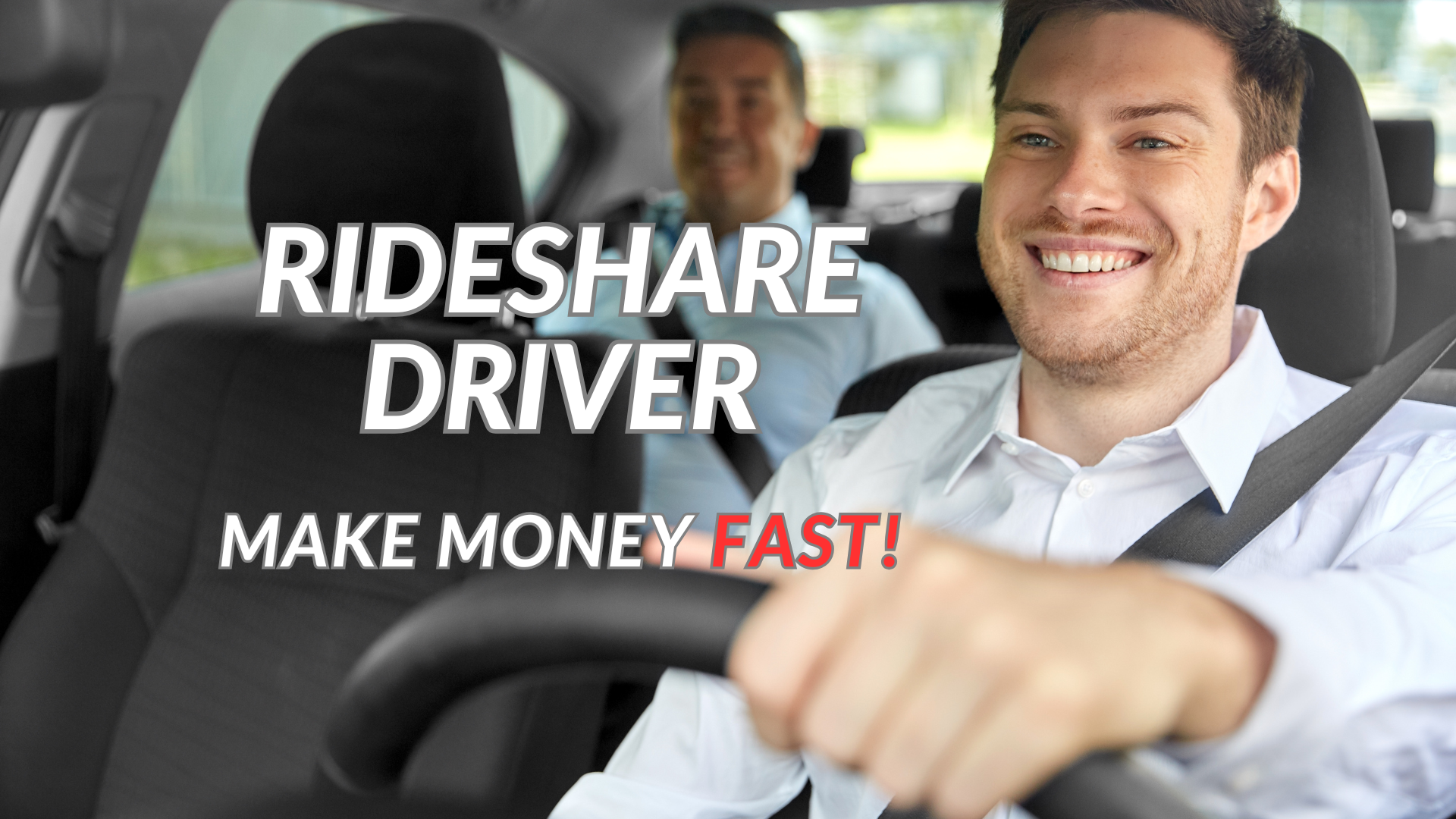When financial emergencies strike, you need money fast. Traditional part-time jobs require applications, interviews, and waiting weeks for your first paycheck. But what if you could start earning emergency money within days? Rideshare driving with Uber or Lyft offers a proven way to generate quick cash when you’re facing unexpected bills, job loss, or other financial crises.
This isn’t about building a career – it’s about surviving a financial emergency. Here’s how rideshare driving can serve as your Money 911 strategy when you need flexible income immediately.
Why Rideshare Driving Works as Emergency Money
Unlike other quick cash strategies, rideshare driving requires minimal startup costs and can begin generating income within 48-72 hours of approval. You’re not selling possessions or taking on debt – you’re leveraging an asset you already own: your car.
Key advantages for emergency situations:
- No interview process or waiting period
- Start earning within days of application
- Work as many or as few hours as needed
- Cash out earnings instantly with most platforms
- No long-term commitments
Getting Started: Your 72-Hour Action Plan
When facing a financial emergency, every hour counts. Here’s your quick-start roadmap:
Day 1: Application and Requirements
- Complete online applications for both Uber and Lyft
- Gather required documents: driver’s license, insurance, vehicle registration
- Schedule vehicle inspection (many auto shops offer same-day service)
- Order background check if not automatically processed
Day 2: Account Setup
- Upload required documents
- Complete any remaining verification steps
- Download driver apps and familiarize yourself with interfaces
- Research high-demand areas in your city
Day 3: Start Driving
- Begin with short drives to learn the platforms
- Focus on busy areas during peak hours
- Track earnings and expenses from day one
Most drivers receive approval within 2-7 days, making this one of the fastest ways to start earning emergency money.
Maximizing Your Emergency Income
When you’re in financial crisis mode, every dollar matters. Strategic driving can significantly boost your hourly earnings:
Peak Hour Strategy
Target these high-demand periods:
- Morning rush: 7:00-9:00 AM (weekdays)
- Evening rush: 5:00-7:00 PM (weekdays)
- Weekend nights: 10:00 PM-3:00 AM (Friday/Saturday)
- Airport runs: Early morning and late evening flights
Surge Pricing Opportunities
- Monitor surge pricing notifications
- Position yourself near event venues during concerts or games
- Drive during bad weather when demand spikes
- Work holidays when regular drivers take time off
Multi-Platform Approach
Running both Uber and Lyft simultaneously increases ride opportunities:
- Accept rides from whichever platform offers better rates
- Reduce downtime between passengers
- Take advantage of platform-specific bonuses
Realistic Emergency Earning Expectations
Understanding potential earnings helps set realistic goals for your Money 911 situation:
Part-Time Emergency Schedule (20 hours/week)
- Conservative estimate: $250-400 per week
- Aggressive peak-hour driving: $400-600 per week
- Major city with surge pricing: $500-800 per week
Full-Time Crisis Mode (40+ hours/week)
- Standard driving: $500-800 per week
- Strategic peak-hour focus: $800-1,200 per week
- High-demand markets: $1,000-1,500 per week
Note: Earnings vary significantly by location, time investment, and driving strategy. These figures are before expenses like gas, maintenance, and taxes.
To help you get a realistic picture of what’s possible, see below for “napkin math.”

Managing Expenses During Financial Crisis
When every dollar counts, tracking expenses becomes critical:
Immediate Costs
- Gas: 15-25% of gross earnings
- Vehicle maintenance: Set aside $0.10-0.15 per mile
- Phone plan: Ensure unlimited data for GPS and apps
Tax Considerations
- Track all miles driven for business
- Save 25-30% of earnings for taxes
- Consider quarterly payments if earning substantial amounts
Vehicle Wear Awareness
Rideshare driving accelerates vehicle depreciation. During financial emergencies, focus on:
- Regular oil changes and tire rotations
- Monitoring brake wear from frequent stops
- Keeping detailed maintenance records
Quick Cash Strategies Beyond Standard Rides
Maximize your emergency earning potential with these additional services:
Delivery Services
- Uber Eats/DoorDash: Lower vehicle wear, flexible scheduling
- Grocery delivery: Higher tips, especially from elderly customers
- Pharmacy runs: Quick trips with good compensation
Premium Services
- Uber Black/Lyft Lux: Higher rates for newer, luxury vehicles
- Airport specialization: Longer trips, premium pricing
- Corporate accounts: Consistent, professional clientele
When Rideshare Driving Makes Sense for Your Money Emergency
This strategy works best when:
- You have a reliable vehicle with current registration and insurance
- Your car is 15 years old or newer (platform requirements vary)
- You can drive safely for extended periods
- You live in or can access areas with decent population density
- You need money within days, not weeks
Red flags to consider:
- Vehicle needs major repairs
- You lack proper insurance coverage
- Physical limitations prevent safe driving
- You live in very rural areas with limited demand
Building Your Emergency Fund While You Drive
Once you’ve addressed your immediate crisis, use continued rideshare income to prevent future Money 911 situations:
Emergency Fund Goals
- Start with $500 for small emergencies
- Build toward one month of expenses
- Eventually target 3-6 months of living costs
Smart Money Moves
- Open high-yield savings account for emergency funds
- Automate transfers of 20-30% of rideshare earnings
- Consider this temporary income while building more stable revenue streams
Transitioning Away from Emergency Driving
Remember: rideshare driving is your financial bandage, not your long-term solution. As your situation stabilizes:
Exit Strategy Planning
- Use the flexible schedule to job hunt or build skills
- Network with passengers in your industry
- Leverage the income stability to pursue better opportunities
- Maintain driving capability as backup income source
Long-Term Financial Health
- Address root causes of financial emergencies
- Build multiple income streams
- Develop emergency fund to avoid future crises
- Consider rideshare driving as occasional supplemental income
Your Money 911 Action Steps
If you’re facing a financial emergency right now:
- Today: Apply to both Uber and Lyft platforms
- This week: Complete vehicle inspection and background checks
- Next week: Begin driving during peak hours
- Within 30 days: Establish sustainable earning routine
- Within 90 days: Build emergency fund and plan transition strategy
Financial emergencies don’t wait for the perfect solution. Rideshare driving offers immediate earning potential with minimal barriers to entry. While it’s not a career path, it can provide the quick cash you need to weather your financial storm and buy time to implement longer-term solutions.
Start your applications today. Your financial emergency solution could be just a few days away.

